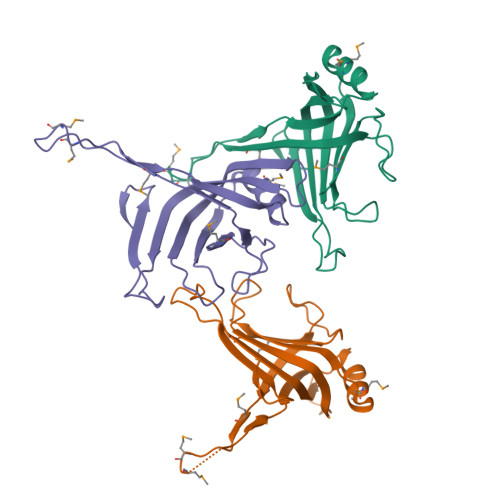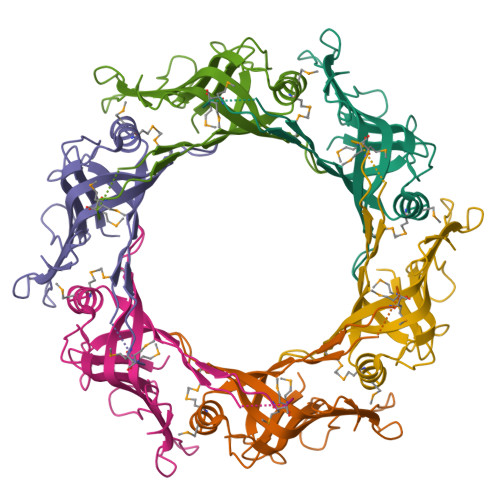A virulence locus of Pseudomonas aeruginosa encodes a protein secretion apparatus.
Mougous, J.D., Cuff, M.E., Raunser, S., Shen, A., Zhou, M., Gifford, C.A., Goodman, A.L., Joachimiak, G., Ordonez, C.L., Lory, S., Walz, T., Joachimiak, A., Mekalanos, J.J.(2006) Science 312: 1526-1530
- PubMed: 16763151
- DOI: https://doi.org/10.1126/science.1128393
- Primary Citation of Related Structures:
1Y12 - PubMed Abstract:
Bacterial pathogens frequently use protein secretion to mediate interactions with their hosts. Here we found that a virulence locus (HSI-I) of Pseudomonas aeruginosa encodes a protein secretion apparatus. The apparatus assembled in discrete subcellular locations and exported Hcp1, a hexameric protein that forms rings with a 40 angstrom internal diameter. Regulatory patterns of HSI-I suggested that the apparatus functions during chronic infections. We detected Hcp1 in pulmonary secretions of cystic fibrosis (CF) patients and Hcp1-specific antibodies in their sera. Thus, HSI-I likely contributes to the pathogenesis of P. aeruginosa in CF patients. HSI-I-related loci are widely distributed among bacterial pathogens and may play a general role in mediating host interactions.
Organizational Affiliation:
Department of Microbiology and Molecular Genetics, Harvard Medical School, Boston, MA 02115, USA.


















